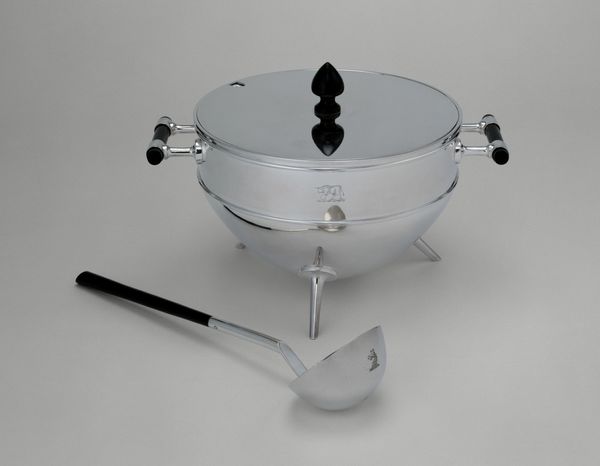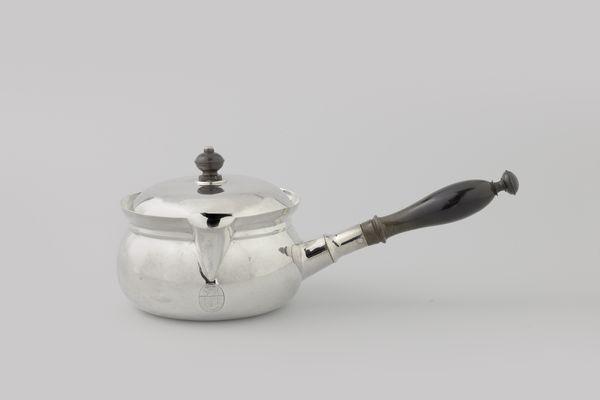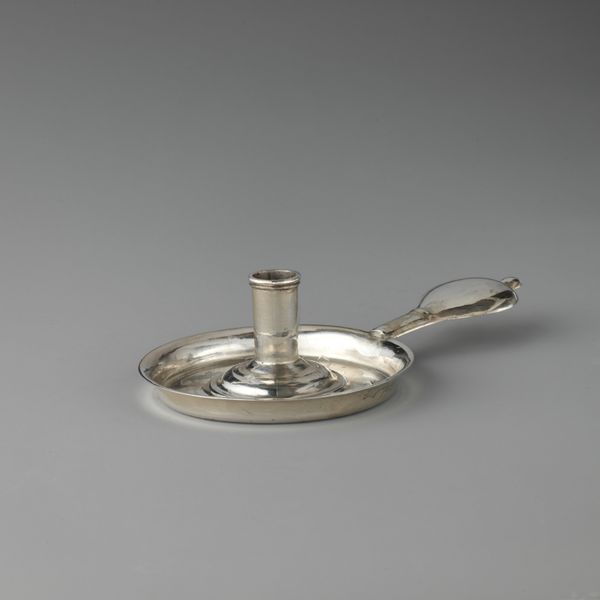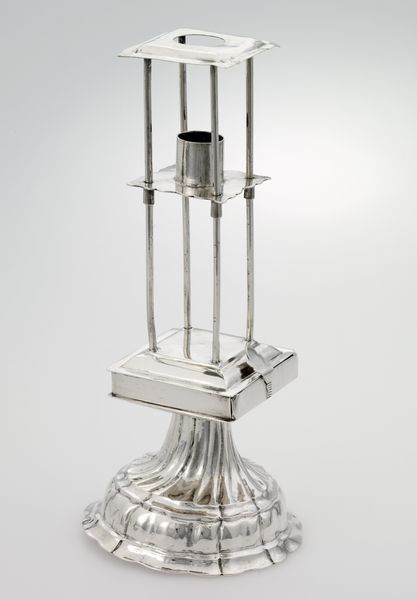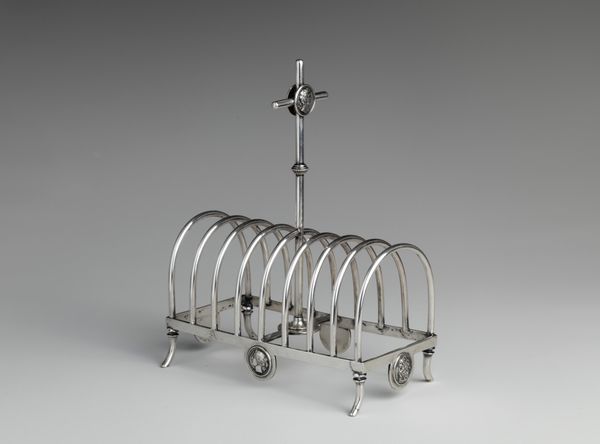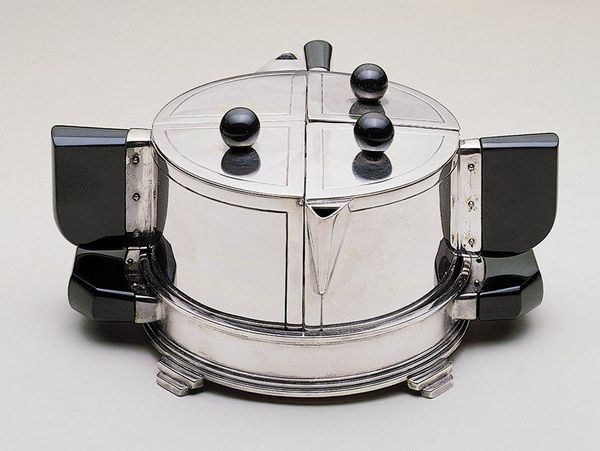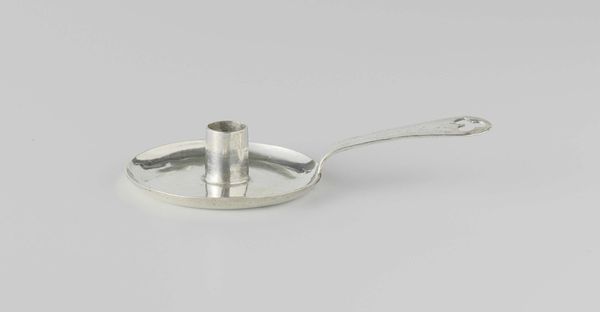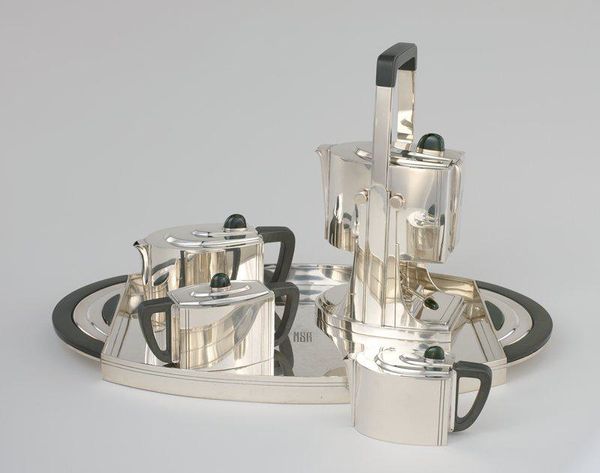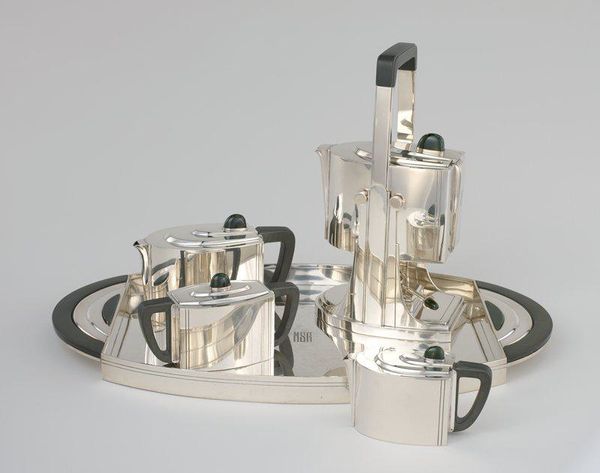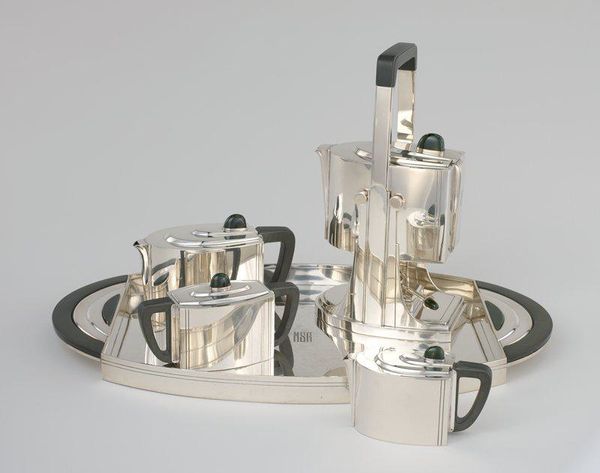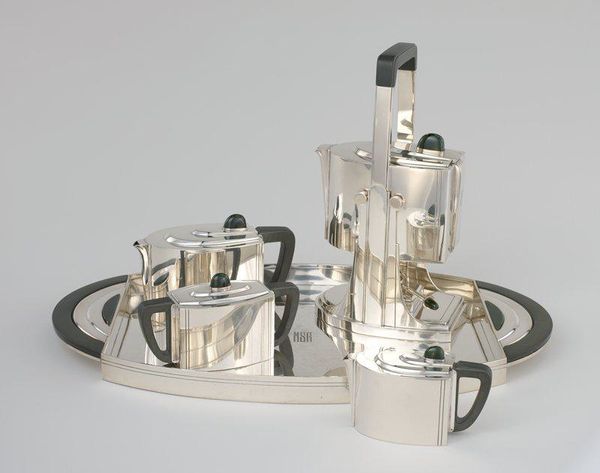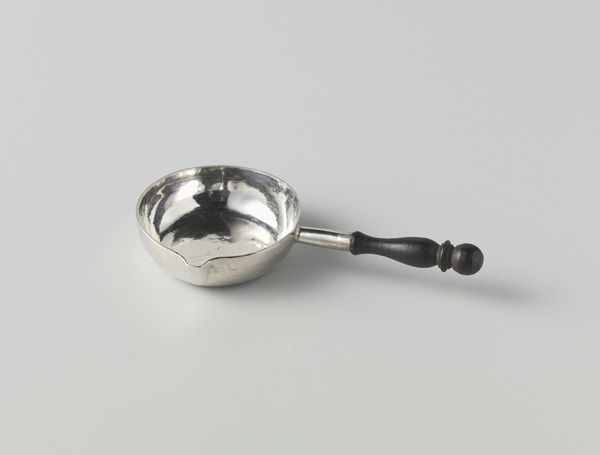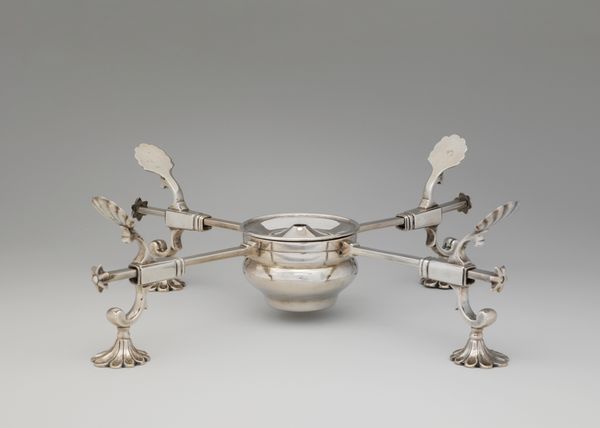
silver, sculpture
#
silver
#
sculpture
#
decorative-art
Dimensions: confirmed: 5 × 9 × 5 1/4 in., 1.1 lb. (12.7 × 22.9 × 13.3 cm, 500g)
Copyright: Public Domain
Editor: Here we have Christopher Dresser's "Teapot," created between 1874 and 1884. It's made of silver, with a wood handle, and the whole thing just looks so futuristic! The stark lines and the way the materials are combined are striking. What can you tell me about it? Curator: This teapot offers a fascinating glimpse into the shifting boundaries between art, craft, and industry in the late 19th century. Dresser's design embraces industrial production; the teapot reflects the influence of mass manufacturing on what had previously been a handcrafted art. Editor: How so? It still looks pretty refined, even precious with the silver. Curator: Notice the smooth, machine-like finish of the silver, devoid of excessive ornamentation, then consider the handle, an example of integrating function with form and exploring available materials like contrasting wood. How does this challenge ideas of the "unique" artwork and labor within this piece? The industrial aesthetic is less about uniqueness and more about accessibility and efficient production. Editor: So, it’s beautiful, but meant to be *made* and used. How did this influence other artists? Curator: Dresser's focus on functionality and his willingness to embrace new materials and industrial processes laid the groundwork for the later design movements of the 20th century. Also think about who would own something like this at that time... Editor: Right! It is speaking to class, consumption, and industrial growth. This completely changes how I look at it! Thank you! Curator: Precisely, and by understanding the material conditions of its production, we gain a richer understanding of its cultural significance.
Comments
No comments
Be the first to comment and join the conversation on the ultimate creative platform.
